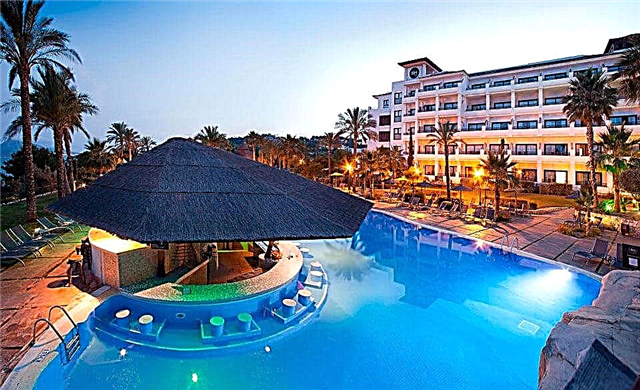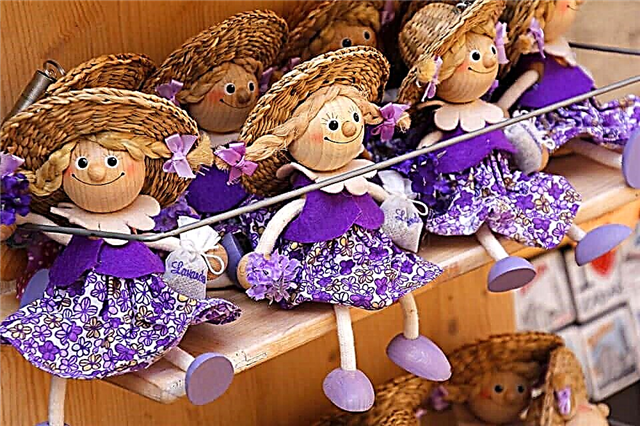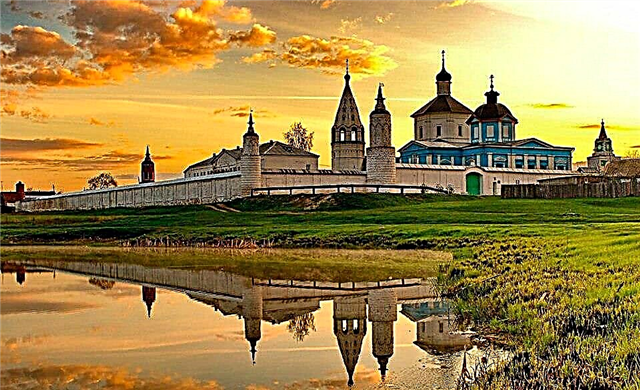Kolomna is an ancient city in the Moscow region. Many Russians do not even know how many historical monuments there are. It will take more than one day to see the sights of Kolomna. There are hotels and guest houses in the city where you can stay. But even if you come to Kolomna for a few hours, you can still try to see the most interesting things.
Kolomna Kremlin

Kolomna Kremlin is an architectural ensemble dating back to the 16th century. Before, in its place there was a wooden Kremlin, which performed a defensive function. At that time, the Moscow principality was forced to defend its borders from the Crimean Tatars.
Buildings made of wood were easy to burn, and they could not resist the assault of enemies for a long time. Under Vasily III, in 1525, the construction of stone walls began. It lasted about 6 years. In total, 16 towers were erected, and the walls were more than 20 m high.
When the peasant uprising under the leadership of Ivan Bolotnikov began at the beginning of the 17th century, the rebels could not take the stone Kremlin by storm. Later, the borders of Russia moved to the south, Kolomna no longer needed a defensive structure - the walls and towers began to be dismantled into bricks: stone buildings were being built in the city.
Nowadays, 7 towers and walls of the Kremlin have survived, the thickness of which is more than 4 m. The architectural complex has Italian features, which were given to it by the architect Aleviz Fryazin. On the territory of the Kremlin there are Orthodox churches and 2 women's monasteries - Novogolutvinsky and Uspensky.
Cathedral Square

The main street of the Kolomna Kremlin leads to Cathedral Square. Active construction began here in the 14th century. Going out to the square, you can see - the church of St. Nicholas Gostiny, the Assumption Cathedral, erected in honor of the victory on the Kulikovo field (the Don icon of the Mother of God is kept in the cathedral). Nearby there is a bell tower of the 17th century and a temple in honor of the Tikhvin Icon of the Mother of God.
More than 8 dozen nuns from Russia and other countries live in the Novogolutvinsky monastery, also located here. The Church of the Resurrection Slovuschey also overlooks Cathedral Square. In the more modest Resurrection Church, which once stood on this place, Dmitry Donskoy himself was married to Evdokia of Suzdalskaya. In 2007, a monument to Cyril and Methodius, the creators of the Slavic alphabet, appeared on Cathedral Square.
Kolomenskaya Tower

Another name for this tower is more common - "Marinkina". The legendary Polish adventurer Marina Mniszek was imprisoned here in the last period of her life. The tower was built in the middle of the 16th century on the western side of the Kremlin. It has 20 sides, its height is 31 m, and its diameter is about 11 m. There are loopholes on the 7 floors of the tower, and on the 8th there are two-horned battlements.
Marina Mnishek, who first became the wife of False Dmitry the First, and then recognized False Dmitry II as her husband, was crowned as the Russian Tsarina. It aroused a feeling of hatred among the people, since in fact it gave Kolomna to the Polish invaders who plundered the city.
After the death of False Dmitry II, Mnishek claimed the throne on behalf of her young son. But the son was executed, and Marina was imprisoned in a tower, where she died in 1614. According to legend, the woman turned into a magpie and left the tower. However, her treasures are still kept here.
Pyatnitsky gate

These gates are the main entrance to the Kremlin. This is where the construction of towers and defensive walls began. The Pyatnitsky Gate Tower has 2 tiers. Before its height reached 35 m, now it is 6 meters lower. The tower is 23 m long and 13 m wide.
It was on this tower that the "alarm bell" hung. When something extraordinary happened, for example, the city was in danger, the alarm was sounded. There was a passage under the tower through which, if necessary, it was possible to enter the city. It was in this way, according to legend, that the Poles burst here, as Marina Mniszek ordered the servants to raise the protective bars.
Zhitnaya Square adjoined the Pyatnitsky Gates, where brisk trade took place. A temple was even erected here in honor of St. Paraskeva, the patroness of commercial affairs, later it was replaced by a chapel. The passage in the Pyatnitsky Gate resembles a horseshoe (according to legend, a horseshoe brought good luck).
Also on the tower you can see an icon with images of the Trinity, the Donskoy Mother of God and the heavenly patrons of the ancient city.
Kolomna Pastila Museum Factory

The museum is located in an old building located next to the Kremlin. Here before was the shop of the merchants Surganovs, where they sold sweets. And today, having come to the museum, you can feel the unique atmosphere of the 19th century. Here you can learn a lot about the history of making marshmallow, its various recipes, see old posters and packaging of a popular delicacy.
The girls-tour guides are dressed in old costumes, and guests are invariably offered to taste the marshmallow. Museum visitors examine kitchen utensils, handmade furniture of the 19th century, and admire embroidery and knitted napkins.
A factory has been opened at the museum - in the building of the merchant Chuprikov's candy-pastille establishment. In the 19th century, its products were popular even outside Russia. After the revolution of 1917, the institution was closed, and for many years no one was able to taste the famous Kolomna marshmallow.
Its production began again only in the 2009th year. They managed to find old recipes and restore the factory's interior. The museum factory opened in 2011. Today, here you can take part in a master class on making the famous delicacy, and buy a box of marshmallows in the company store to take with you.
Kuznechnaya Sloboda
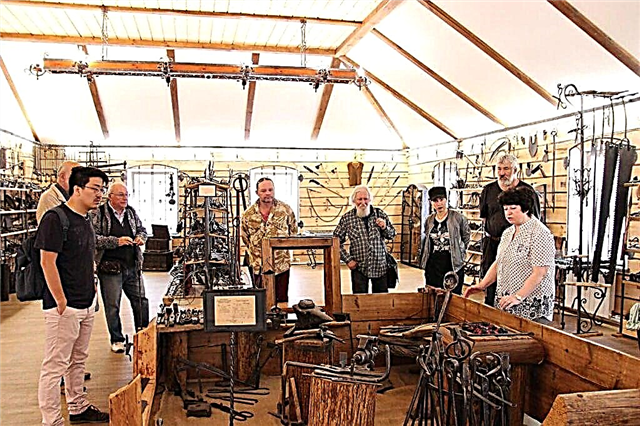
Museum "Kuznechnaya Sloboda" was opened in 2010, today it houses about 7000 exhibits. A tour of the museum lasts about 2 hours, but they fly by unnoticed. Visitors see items made by blacksmiths who lived many centuries ago.
These are details of the armament of Russian soldiers - armor, weapons. And also forged things that have long gone out of use. Skillful craftsmen turned them into real works of art. These are irons, scales, kettles and other household items. You can buy souvenirs in the museum shop.
Museum project "Artkommunalka"

The museum is located in a former merchant mansion on October Revolution Street. Once upon a time, communal apartments were located on the second floor, and the Ogonyok store operated on the first floor. The famous writer Venedikt Erofeev worked there as a loader. The museum opened in 2011, it began with several exhibits, but the collection was actively replenished by the residents of the city.
Today you can plunge into the atmosphere of a real communal apartment - see things of those times, and even order a performance with the participation of actors. Moreover, each performance is unique - it never repeats itself. The life of the inhabitants of the "communal apartment" unfolds before the audience. In addition, various events are constantly held in the museum.
Monument to the Fighters of Two Revolutions

The monument was inaugurated in 1958, its architect is N.P. Ponikarov. In 1917, riots took place in Kolomna - not enough bread was brought to the city.
The authorities used weapons against the townspeople, among the dead were a Red Guard, a sailor, a commissioner ... The bodies were buried near the Church of St. John the Evangelist. Later, the ashes of the victims of the 1905 punitive expedition were brought here. The square where the grave was located was renamed the Square of Two Revolutions.
At the end of the 30s of the last century, a competition was announced for the project of a monument to the fallen. About a hundred projects were submitted for it, but the monument was erected only in 1958. By this time, the remains of the gymnasium student Ivan Markov, a participant in the 1905 revolution, were transferred to the mass grave.
Faceted tower

The faceted tower of the Kolomna Kremlin is unique. On the outside, it has 6 faces, and on the inside, the architect gave it the shape of a rectangle. There is no such tower in the Kremlin anymore. In the place where the tower stands, the Astrakhan and Vladimir-Kashirsky tracts used to converge.
The height of the building exceeds 20 m, and loopholes located in tiers made it possible for the defenders of the Kremlin to repel the attack of enemies. Later, the Faceted Tower became a chapel, and after the revolution, a kerosene trade was opened in it. Only in the 80s of the 20th century, the upper tier was restored. Today, the Museum of Old Russian Weapons is open in the Faceted Tower.
Bishops' chambers

The Bishops' Chambers were built at the end of the 17th century under Archbishop Nikita. There was also a house church in honor of St. Sergius of Raonezh and another church - Trinity.
Local bishops lived here, later seminar students, and then monks. The appearance of the building changed - periodically there were fires, the building had to be repaired, reconstructed. So, in the middle of the 18th century, the architect Ivan Michurin made a description of the chambers that suffered from the fire and the estimate necessary for their restoration.
According to this document, there were 16 chambers on the second floor, and 14. On the first floor, there were also a vestibule, closets, and a kitchen. The greatest damage was caused to the chambers by another fire, which happened in 1777. Count Sheremetyev supervised the restoration of the building. In the 19th century, a brick church was built here.
Today, the chambers have become a popular attraction in Kolomna, and their inspection is included in many excursions.
Simeon Tower

The eastern tower of the Kolomna Kremlin is named after the temple dedicated to Simeon the Stylite. It was located in the neighborhood, on Zhitnaya Square, and has not survived to this day. Simeonovskaya tower is quite high - about 24 m, its width reaches 8 m.
There are 5 floors inside the tower, one of which is underground. And at the top there is a gallery, bordered by high - over 2 m - teeth, which in shape resemble a bird's tail. The structure is crowned with a hipped roof. Previously, the Kremlin included 4 more such towers, now only 3 have survived.
Museum "Kalachnaya"
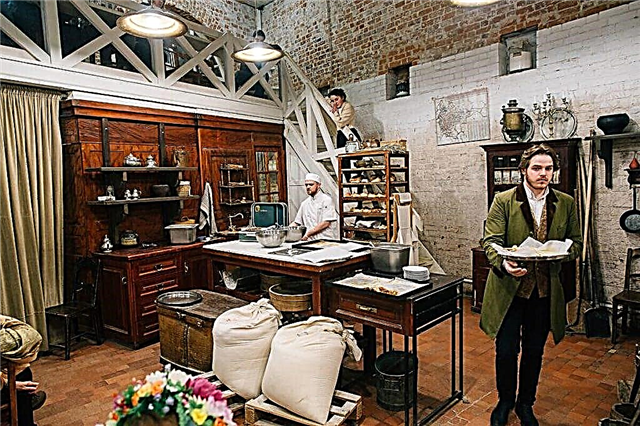
After the revolution of 1917, the kalach trade was lost, and it was impossible to taste the fried kalach cooked according to old recipes even in Moscow. But in Kolomna, which from time immemorial was famous for its kalachi, they decided to revive the craft.
The Kalachanaya Museum was opened next to the Kolomna Kremlin. It is housed in a building built in the middle of the 19th century, and baked steel products in an oven, reconstructed according to old drawings. Moreover, bakers needed to know a lot of all sorts of tricks.
For example, in order for the roll to turn out to be snow-white inside, it was supposed to use only birch firewood, previously cleaned of bark.
Today, museum visitors can observe the whole process: how the leaven is made, the dough is put, rolled out, and the rolls are made. Send them to the oven. Each action is accompanied by a detailed story of the guide. The tour ends, of course, with a tasting.
You can also buy rolls to take with you. The revival of Kolomenskoye Posad began with the Kalachnaya Museum, and the project itself received an award in the "Changing Museum in a Changing World" competition.
Favorite Toy Museum

Toys are the first friends of every child. Even adults remember well those dolls and animals with which they played in childhood. Therefore, visiting the Museum of Favorite Toys makes children happy and their parents and grandparents feel nostalgic.
The museum contains toys that have been made over the past century and a half. The museum was opened in 2014 based on the collection of Irina Kulikova. Since then, the number of exhibits has increased significantly. Children do not leave here for a long time, because old toys make a truly mesmerizing impression.
Irina Kulikova herself is a real craftswoman. She buys toys at auctions and antique stores and restores them with her own hands.
Miniature carriages, horses on which you can swing, favorite cartoon characters - Carlson, Cheburashka and Gena the crocodile, soldiers and doll dishes - the world of childhood comes to life here. For those who wish, by prior arrangement, the owner of the museum will hold a master class on making toys.
The estate of the merchants Lazhechnikovs

Ivan Lazhechnikov is the author of historical novels, one of which, The Ice House, brought him all-Russian fame. The Lazhechnikov family itself gave talented merchants to the fatherland. In the middle of the 18th century, the family decided to build an estate in the center of Kolomna, reminiscent of a rich country house.
And by all means surround it with a green park. The estate was built. Over time, the house was somewhat rebuilt, expanded, and happily lived here. But after the revolution, the mansion was naturally nationalized. Only in the 80s of the 20th century museum funds were placed here.
Today, guests of the museum can plunge into the life of ancient Kolomna. See how the peasants lived in a Russian hut, try weights by weight, admire the elegant embroidered clothes that the girls prepared for themselves as a dowry, look into the pantry with rich supplies.
There are halls in the estate, when visiting which one gets the impression that the Lazhechnikovs still live here - they just went out for a minute. Also in the museum you can watch the silent film "Ice House" and drink tea with marshmallow.
Museum "House of the Samovar"

The Museum "House of the Samovar" is located next to the Museum of Kolomna Pastila, so it will be convenient to visit them in one day. The exposition was based on the collection of the Burov family. Guests will see a variety of exhibits. Samovars from Asia - oddly enough, it was there that they were invented, and then appeared in Russia.
Samovars are huge and very small - for one mug of boiling water, pot-bellied and flat, designed for field conditions, wood-fired and those that are heated by electricity - in a word, eyes run wide. You can also see other antiques here - irons, kerosene lamps, dishes. Those who wish to be photographed in the museum will be dressed up in old Russian clothes.
Museum of Military Glory

The Museum of Military Glory is located at Invincible 1 Street. Previously, it was located in the Church of Peter and Paul. But the current spacious building, the facade of which resembles a red flag, allows you to show guests all the exhibits - after all, their number is constantly increasing. The museum tells about the inhabitants of the region who took part in various wars: from the Middle Ages to the present day.
In the Hall of Fame, you can get acquainted with the Book of Memory, which contains all the collected information about the warriors. Of course, the museum also displays portraits of heroes, weapons of different eras, machines used to make shells and parts of military equipment during the Great Patriotic War. There is also an exposition in the museum dedicated to the hostilities in Afghanistan.
Monument to Water Carrier

The residents of Kolomna are very fond of this monument, dedicated to people who were engaged in such difficult but necessary work. From the Moskva River, water carriers took water into barrels and transported it around the city. A bucket of water at that time cost 2 kopecks.
Only at the beginning of the 20th century, when a water supply system appeared in the city, the profession became a thing of the past. The monument was opened in 2012, and it was made by local blacksmiths, led by Anton Yakushev. This is a whole composition - the water carrier itself, his dog, as well as a barrel and a ladle. There is also a piggy bank mug. The collected funds are donated to charity projects.
Museum "School of Crafts"

The School of Crafts Museum is a real cultural center, where you can not only get acquainted with the works of craftsmen, but also learn those crafts that are now considered forgotten. Entering the museum, guests find themselves in a real Russian hallway, a guide in a national costume greets them with a bow.
In the museum you can see a stove and kitchen utensils, wicker baskets and sandals.But, of course, guests pay the most attention to women's needlework. Ancient embroidery, knitted tablecloths, lace, fabrics, dolls - all this can be held in your hands.
For such holidays as Maslenitsa, Easter, Christmas, Christmastide - the museum has prepared special programs. But not only crafts are introduced to guests. They learn about the traditional rituals of the Russian people, lead round dances, solve ancient riddles, learn to pronounce tongue twisters.
Some come to the School of Crafts on a regular basis and really master some new skill for themselves. Among the "graduates" there are also the most successful, who now work in well-known fashion houses.
Assumption Brusensky Convent

The monastery was founded in the middle of the 16th century to commemorate the campaign of the troops of Tsar Ivan the Terrible against Kazan. Initially, the monastery was conceived as a man's, but after the Time of Troubles, nuns already lived in it. The first stone buildings began to appear at the end of the 18th century.
Gradually they replaced the wooden ones. So, a bell tower over the gates, residential buildings, a cathedral, and various outbuildings were built. At the end of the 19th century, a building was erected for a refectory and an almshouse.
With the establishment of Soviet power, the monastery was closed, people began to settle in its premises, and some buildings were taken as warehouses. Only by the end of the 20th century, the restoration of the Assumption Church began, the territory of the monastery was returned to the Russian Orthodox Church.
Today you can see the Cathedral of the Assumption of the Virgin and the Cathedral of the Exaltation of the Cross, worship one of the first copies of the original Kazan icon of the Virgin.
Assumption Cathedral

Once upon a time there was a cathedral built in the 14th century on this site. It was erected by order of Prince Dmitry Donskoy, who defeated the troops of the Golden Horde in a battle near the Vozha River. And Theophanes the Greek himself painted that cathedral. At the end of the 16th century St. Job served in it.
By the end of the 17th century, the cathedral fell into disrepair and was demolished. A new one was erected in its place, the architect was M. Alekseev. In the new cathedral, Saint Philaret served and read sermons to the flock more than once. In 1929 the cathedral was closed and plundered. In 1989, the cathedral was returned to the Russian Orthodox Church, and it was returned to the church only 60 years later.
Epiphany Staro-Golutvin Monastery

On the outskirts of Kolomna there is a beautiful architectural ensemble - the Staro-Golutvin Monastery. It is believed that its construction began in the 14th century, and that Sergius of Radonezh was involved in the idea of its construction. Over the next centuries, the monastery expanded.
Today, pilgrims and ordinary tourists can admire the Epiphany Cathedral, the temple in honor of St. Sergius of Radonezh, the beautiful gateway church. The main shrines of the monastery are the particles of the Cross, on which Christ was crucified, and part of His crown of thorns. Getting into the service is also not difficult. Every day, at 8 am, the Divine Liturgy begins in the monastery.
Novogolutvinsky Holy Trinity Monastery

As you might guess from the name, this monastery was founded much later than the Staro-Golutvin monastery. Construction here began only in the 19th century. The Trinity Cathedral of the 18th century and the bishops' chambers of white stone were already on the territory of the future monastery.
Later were erected - a bell tower, the height of which exceeds 50 m, a beautiful fence with towers, 2 temples and chapels. After the revolution, the monastery was closed, valuable things were taken out of it. Only at the end of the 20th century, restoration work began here, and the monastery was returned to the Orthodox Church.
The Trinity Cathedral is unusually beautiful, it is difficult to find a more vivid example of the "Russian Baroque" style, and you will not see such mosaic floors anywhere else in Russia. The magnificent painting adorns the Intercession Church, and the carved wood iconostasis is a real work of art.
The iconostasis in the church in honor of Blessed Xenia of Petersburg is also unusual - it is made of ceramics. Children who come to the monastery will also be interested to look at the dog kennel and get acquainted with a live camel that lives at the monastery.
Bobrenev Theotokos-Nativity monastery

One of the most beautiful monasteries in Russia has a glorious history. Sergius of Radonezh blessed Prince Dmitry Donskoy to build this monastery after the victory of the Russian army over the troops of the Golden Horde on the Kulikovo field It is believed that a significant amount for the construction of the monastery was donated by the voivode Bobrok, which is why the monastery is sometimes called "Bobrenyova".
By the 18th century, the monastery was already in need of renovation. The brethren temporarily moved to the Novogolutvin Monastery, and work began at the Mother of God-Nativity Monastery. A temple was erected here in honor of the Feodorovskaya Icon of the Mother of God, new outbuildings appeared.
The actions of the Soviet authorities can be called criminal - after the revolution, the monastery was turned into a warehouse for storing fertilizers. Today, restoration work is still underway, but the monastery is already waiting for pilgrims and tourists.
You can bow to the main shrine - a list with the Feodorovskaya Icon of the Mother of God, written by the Evangelist Luke. And also listen to the singing of the church choir in the temple with unique acoustics.
Church of St. Nicholas on Posada

The temple was built of white stone at the beginning of the 18th century. In the rarest style of the Moscow pattern. It seems that this is not an Orthodox church, but an elegant fairytale tower.
In the 16th century, a wooden church in honor of Nikolai the Pleasant stood on this place. They called him "Posadsky" because he was outside the city. There was also one more nickname "the temple of St. Nicholas the Wet", since on the temple icon the saint was depicted at the moment when he was saving a child from the water.
In the 18th century, on the donations of the city's residents, a stone church was built on the site of a wooden one in a style that emphasized the proximity of Kolomna and Moscow, the common interests of the two cities. Today the temple belongs to the Russian Old Believer Church. Therefore, tourists, most likely, will not have to go inside. But at any time you can admire the unusual architecture of the temple.
Museum of Flax and Russian Woman's Life

The Flax Museum is located not far from Kuznechnaya Sloboda. And here, too, history comes to life. After all, the whole life of Russian families, especially women, was associated with flax.
Linen - clothes, bed linen, towels, tablecloths, curtains - all this was an integral part of everyday life. In the museum, tourists are introduced to how flax was grown from seeds, how yarn was obtained, weaved and sewn. You can see spindles, spinning wheels, a loom, admire ancient linen products, national costumes.
You can order a master class in advance and make your own souvenirs, such as dolls or amulets. There is also a souvenir shop where you can buy clothes, interior items and small souvenirs made by the hands of local craftswomen.
Kolomna Museum of Local Lore

Kolomna Museum of Local Lore has a rich history - it was founded more than 80 years ago. Today it unites the Lazhechnikovs' estate, the Voivode's House and the Museum of Military Glory.
Thus, tourists have the opportunity to get acquainted with the history of the region - from ancient times to the present day. Particular attention is paid to the work of the writer Lazhechnikov and the period of the Great Patriotic War. In total, the museum contains about 30,000 exhibits, and more than 50,000 tourists visit it annually.
Zoo Gorki

You can take a whole day to visit this zoo. In 2009, a neglected farm was located on this site. It was converted into a petting zoo. Today, a wide variety of animals are kept here - from agricultural to exotic.
Good conditions are provided for all pets, so cubs are often born. In the zoo you can see ostriches and raccoons, buffaloes and yaks, llamas and camels, as well as many other animals. Some are allowed to enter the enclosures, feed them, and even take small animals in your arms.
If one of the animals especially attracts you, you can become his "guardian", that is, take a material part in the maintenance of this particular animal.
There is a riding school, you can also just ride a horse or pony. And the eco-shop at the zoo sells ecologically clean agricultural products - milk, eggs, etc. Another nice nuance - children under 7 years old visit the zoo for free.
Ozerov's house

It is difficult to define what constitutes the Ozerov House. It is at the same time an old building, a museum, and a cultural and leisure center. On the border of the 18-19th centuries, this house was built for the wealthy wine merchant A. Ozerov.
But from the very beginning it seemed that this mansion did not resemble a private house, but a state building, possibly a museum. During the years of Soviet power, the mansion was transferred to the city administration, and later a museum was located here. Various exhibitions are brought here, but there are also those that operate constantly. So, here you can always see the wooden sculptures of A. Leonardov.
Fairy-tale characters, extraordinary palaces and panels - all this was made by a talented self-taught sculptor. Romantic paintings by K. Vasiliev are of great interest to the guests of the museum. Heroes of fairy tales and legends come to life on them - mighty heroes, incomparable beauties, Russian nature itself.
The third permanent exhibition is a collection of paintings by M. Abakumov. They also glorify Russian nature, talk about the traditional way of life and seem to breathe light and warmth. The museum also hosts cultural events, including concerts and master classes. For children, special interactive programs have been developed, where we are talking about their favorite fairy tales and Russian heroes.
Skating center "Kolomna"

But Kolomna is famous not only for its antiquity. Its pride is also a modern speed skating center. It is a whole sports complex designed for children and adults. Sports competitions of various levels are held here.
But in the center you can not only watch competitions or go ice skating. At the service of residents and guests of the city - a spacious swimming pool, a hall equipped with modern exercise equipment, sports grounds, a health center. There is a Museum of Skates and cozy cafes, you can sit in the winter garden, take part in mass skating on ice.
Monument to steam locomotive L-0012

It is not so often that you can see a monument to a steam locomotive. But in Kolomna he is. The L-series steam locomotive was produced by a local plant in 1946. It found its place at Lebedyansky Boulevard. It was the engineer L. Lebedyansky who was involved in the development of this project.
The "L" series steam locomotive has become one of the best domestic freight steam locomotives. He not only worked flawlessly on all the railways of the vast country, but also "starred" in films. He can be seen in such popular films as "12 Chairs", "Children of the Arbat", "Admiral".
This is just a part of the sights of Kolomna, one of the oldest and most beautiful cities in Russia. If you have the opportunity to come here and see everything with your own eyes, do not miss this chance.






